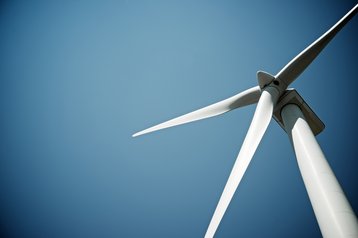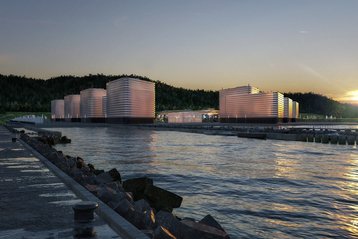The demand for digital and data services continues to grow at an unprecedented rate. According to the International Energy Agency (IEA), the number of internet users globally has more than doubled since 2010, while internet traffic has surged 20-fold.
Despite major efficiency improvements, workloads handled by large data centers have increased energy consumption by 20-40 percent annually since 2020. As artificial intelligence (AI) adoption accelerates, overall data center power usage is expected to increase by 200TWh per year between 2023 and 2030. This raises the question of how will data centers cope with the increased energy demand while adhering to their ambitious net zero targets?
Data center operators have increasingly turned to power purchase agreements (PPAs) to help achieve their green ambitions in recent years. These deals see large users of fossil fuel-based electricity buy an equivalent amount of renewable power to put back into the grid and offset their emissions.
Data center operators are some of the biggest exponents of PPAs: Amazon claims to be the biggest corporate buyer of renewable energy in the world, and says it has backed more than 500 projects generating 77,000 GWh of clean energy each year. Microsoft, Google, and Meta are among the other tech companies active in the PPA space.
But in recent years the PPA market has become increasingly volatile, with factors including tariffs, supply chain disruptions, and growing competition driving up costs. This shift has turned what was once a buyer's market into one that favors sellers, forcing data center operators to adapt by developing new PPA contract structures, supporting innovative energy technologies, and implementing smart solutions to better manage their energy consumption. These challenges could call into question the long-term viability of PPAs in the data center sector.
PPAs versus onsite generation
For data centers, PPAs are essential in securing renewable energy to displace fossil fuels on the grid, a key part of their carbon reduction strategies. With large data centers now requiring upwards of 100MW of power, PPAs in the sector are often larger than in other industries, frequently exceeding 100-200MW of procured power. Not only are PPAs getting bigger, but the volume signed by data center operators is rising rapidly.
Notable deals inked during the last couple of years include Amazon signing several PPAs with Spanish developer Iberdrola to source energy from two offshore wind farms in Germany — 476MW Baltic Eagle and 300 MW Windanker — which will provide Amazon with 1.1TWh of energy annually, indicative of the volume sought by operators. Earlier this month, it inked further agreements to take power from Iberdrola installations in Spain and Portugal.
Most PPAs signed within the sector are tied to wind and solar projects, as they are the most cost-effective renewable energy sources in major markets. However, as Andrew Webber, CEO of Digital Power Optimization (DPO), contends, most data centers often do not actually receive power directly from renewable assets. He says: "Many data centers use virtual PPAs (VPPAs) to buy wind or solar power, but the actual energy used often comes from fossil fuels, as the wind or solar energy is generated far from the facility."
DPO’s business model is to colocate data centers with stranded renewable projects throughout the US to support "smoothing out low or negative pricing, boosting the overall revenue for the producer."
Webber sees this as a win-win situation for both parties, because "if there's already a wind or solar asset in development, it's worth considering building a data center nearby, especially in remote areas where land and substations are available, as long as fiber can be run in at a reasonable cost."
Doing so reduces the concerns attached to VPPAs that operators often rely on fossil fuels to power their facility despite adding green energy to the grid.
For Webber, PPAs remain a key component in data centers' push to acquire green power generation. But, he says, there “isn't one right solution for meeting data center energy demands.” He explains: “We need a combination of strategies, including renewable assets, government action, and even nuclear, to address these challenges."
As a result, rather than putting all its eggs in the PPA basket, data centers should look at a range of solutions to power their sites, from onsite generation from renewable assets to the deployment of emerging technology.
Shifting Technology Preferences
The major concern about PPAs is that they derive the majority of their power from wind and solar assets, which are intermittent by nature. As a result, operators have begun to explore alternatives like geothermal and hydropower, which offer more consistent energy flow. For example, Microsoft signed a 10-year PPA in May 2023 to procure geothermal energy for its New Zealand data centers.
These sources, though, are geographically constrained, limiting their availability to certain regions. As a result, operators have increasingly sought to place their operations in areas most likely to benefit from a stable renewable resource, leading to the proliferation of data centers in areas such as the Nordics.
In addition, data center operators have begun to explore small modular nuclear reactors (SMRs) as a potential alternative to traditional renewable PPAs. SMR developers claim they can offer a more cost-competitive solution than renewables, though the technology has yet to come to market.
Several major data center firms have signed provisional PPAs with SMR firms to support their operations. The most notable is Google, which signed a 500MW supply agreement with Kairos Power last year. The agreement is crucial for the SMR sector, according to Kairos CEO Mike Laufer, who stated: "Google’s motivation to be a first mover on our technology showcases the agility of data center operators to recognize the need for innovative, reliable power sources."
Therefore, although traditional renewable PPAs remain the dominant tool for securing clean energy, these emerging technologies could reshape the market.
Evolving contract structures and partnership models
The structure of PPA contracts within the data center sector has evolved significantly in recent years, with longer term contracts becoming more common.
Aaron Binkley, VP of ESG at Digital Realty, sheds further light on this, stating, "You used to see shorter-term deals, like ten or 12 years, when the market was more favorable to buyers. Now, terms of 15 to 20 years are much more common as developers have less flexibility to offer shorter contracts."
A recent example was in September 2023, when Microsoft secured 323MW of capacity from Shell's Witznitz Energy Park under a 15-year agreement. Most data center PPA market suppliers are established utility firms like EDP, EDF, AES, Clearway, and Dominion. This strategy allows developers to partner with companies with strong credit profiles and a solid energy infrastructure base, which helps optimize procurement costs and streamline agreements for the offtakers.
In addition, tech companies have begun forming partnerships to address supply chain delays and permitting obstacles. Amazon recently signed its first PPA for a brownfield project, converting a coal mine site in Maryland into a solar farm. By investing directly in project development, data center operators can secure more reliable power for their facilities without s without relying on third-party developers, who may face delays in getting their projects approved and connected to the grid.
This approach is gaining traction. In May 2023, Microsoft entered into a long-term CPPA with SSE Renewables and FuturEnergy Ireland to support the development of the Lenalea Wind Farm in Ireland. These shifts in PPA structures and partnerships highlight data center operators' evolving strategies to secure sustainable energy amid a more competitive and constrained market. However, the sector still faces significant challenges, including rising energy costs, grid limitations, and regulatory hurdles, which could impact their long-term energy procurement and broader sustainability goals.
Challenges and Bottlenecks
The PPA market faces several challenges, starting with regulatory inconsistencies across regions that complicate renewable project development. Despite efforts to streamline processes, projects often face supply chain constraints, land-use limitations, and prolonged waits for grid connections, with many permitted projects taking 5-10 years to become operational.
These delays have contributed to rising PPA costs, which are further exacerbated by tariffs, disruptions in the supply chain, and increased competition. "In the data center industry, we are seeing issues not only with getting new renewable projects interconnected but also with meeting the increasing load demands as data centers continue to grow rapidly," states Binkley. Additionally, aligning PPA structures with evolving corporate sustainability and decarbonization goals adds complexity to contract negotiations.
Some argue that while PPAs facilitate the expansion of renewable energy assets, the more significant challenge lies in integrating these resources into the grid and adapting energy consumption to mitigate the intermittency of renewable energy sources. As baseload consumers, data centers require a constant energy supply, which is difficult to ensure with intermittent renewables. "The permitting and interconnection process has become a critical bottleneck," Binkley notes, stressing the challenges utilities face in connecting new renewable projects to the grid.
Furthermore, most data centers are located far from renewable resources, raising the need for enhanced urban renewable planning or relocating data centers closer to power sources. For Webber, this is a significant issue: "Adding solar to existing data centers is challenging because there often isn't enough land nearby for large-scale solar installations, and even if it's close transmission remains an issue,” he says.
As data demand grows, it is crucial to develop a coherent strategy to secure sufficient green energy while maintaining net-zero commitments. Rapid data growth, increased energy demand, and corporate sustainability goals are transforming the PPA market for data centers. While PPAs remain a crucial tool for data center operators, emerging technologies like SMRs, onsite generation, and the need to overcome regulatory and supply chain bottlenecks are reshaping the market landscape.
In the future, securing reliable, renewable energy will be vital to sustaining the growth of data centers while meeting their ambitious decarbonization targets. Data center operators will have to deploy a highly flexible approach in order to meet both growing power targets and their lofty decarbonization goals.
Read the orginal article: https://www.datacenterdynamics.com/en/analysis/do-ppas-have-a-future-in-the-data-center-sector/





